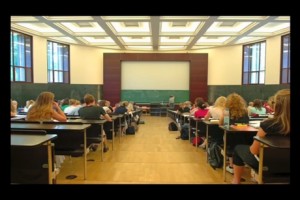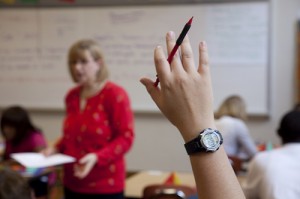In a recent book by Mike Schmoker, titled Focus: Elevating the Essentials To Radically Improve Student Learning (ASCD 2011), he talks about some basic, timeless teaching practices that tend to get overlooked in favor of more enticing strategies that have been the focus of late, like multimodal teaching, “hands-on” instruction, project-based learning, whole-body immersion, and field trip events. These are all important methods but there are some other more hidden practices that are just as important to learner success. These practices also formed the basis of my training as a social studies teacher four decades ago at the University of Chicago MAT program. I don’t see these practices being offered in many training programs today. And Schmoker says few teachers use them or even realize how central they are to learner success.
These practices are:
- Clear and simple language,
- Goal-driven, step-wise instruction,
- Checking for understanding (or formative evaluation), and
- Modeling the learning process, including thinking out loud with the student as partner (followed by student practice).
These strategies are discussed in the works of W. James Popham, Ted Sizer, John Holt, Madeleine Hunter, Douglas Fisher and Nancy Frey, Robert Marzano, and many other researchers. These practices promote a relaxed classroom atmosphere and focused learners have less anxiety about what is happening and what is expected of them, not to mention more motivation to buy in.
Here are some ways to promote each of these practices:
- Start the class with an introduction that tells students the main things that they are going to be
 doing or learning that day, how to be most effective (what skills they will use) and why it is important that they learn this.
doing or learning that day, how to be most effective (what skills they will use) and why it is important that they learn this. - End the class with a wrap up that includes: student feedback on the lesson; reference to the same main points mentioned in the introduction, along with what worked and didn’t work; the most important things they learned; and where the lesson is going next.
- If students are confused and have questions of you, periodically check to see that YOU understand the student’s process both as a way to be sure that individual students understand the instructions and to see if they know what to do next. When students seem stuck, stop and be sure to resolve the confusion before moving on. This feedback process should be immediate, not occur a day or two later.
- Be sure each activity has a clear goal and that each chunk of instruction toward that goal is clearly segmented for the students. Instructions should also be stated slowly, in simple language, and both orally and in writing.
- Share your thinking with students. Model how to solve the type of problem you are asking students to solve. Have them construct a similar problem to see if you can solve it, then, talk about the process you used, and ask them theirs.
I believe these practices need to be part of every teacher’s repertoire. When working with students, if I can keep them in mind, I find myself slowing down, focusing on what’s most important and making student feedback on their own learning process my top priority.
A good recipe for success!
Images
Jay Babin


Leave a Reply
You must be logged in to post a comment.